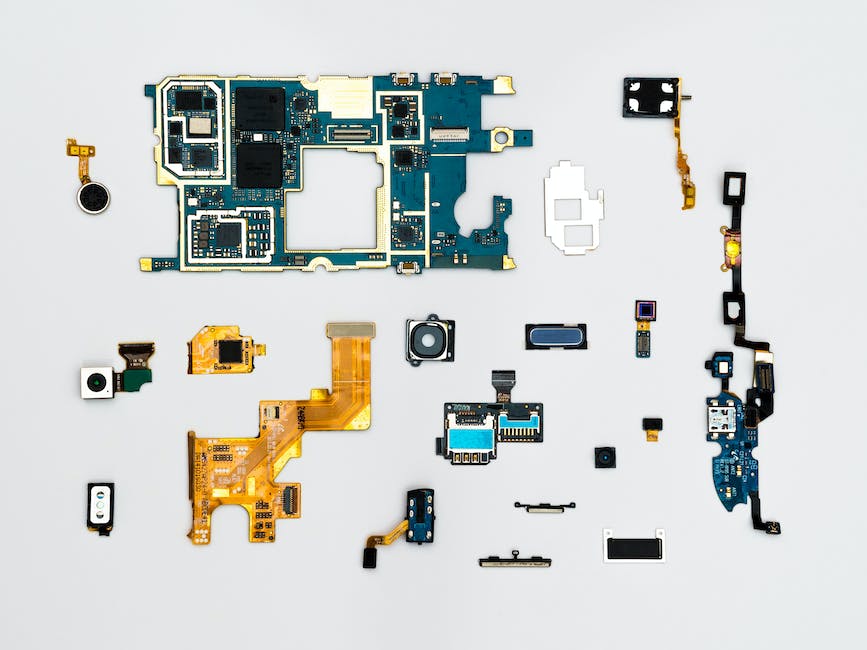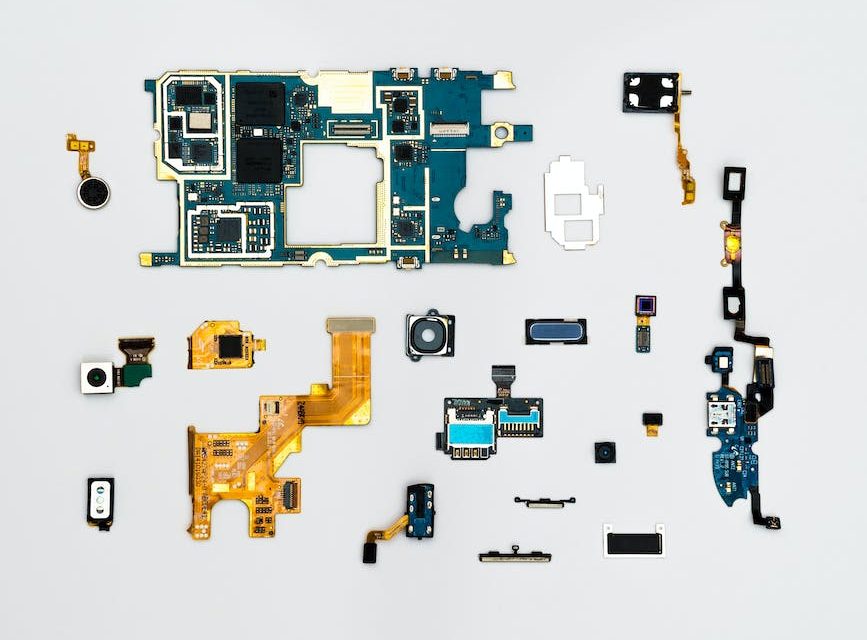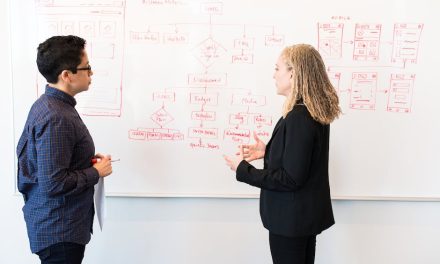Table of Contents
- Introduction
- The Importance of Closing the CX Gap in Federal Agencies
- Leveraging Technology to Enhance Customer Experience in Federal Agencies
- Key Strategies for Closing the CX Gap in Federal Agencies through Technology
- Case Studies: Successful Implementation of Technology to Bridge the CX Gap in Federal Agencies
- Q&A
- Conclusion
Closing the CX Gap: Leveraging Technology for Federal Agencies – Enhancing citizen experiences through innovative solutions.
Introduction
Closing the CX Gap: Leveraging Technology for Federal Agencies
In today’s digital age, customer experience (CX) has become a critical factor in the success of any organization, including federal agencies. The ability to provide seamless, efficient, and personalized experiences to citizens is essential for building trust and satisfaction. However, many federal agencies still struggle to meet the expectations of their customers due to various challenges. This is where leveraging technology can play a crucial role in closing the CX gap. By adopting innovative solutions and embracing digital transformation, federal agencies can enhance their CX capabilities and deliver exceptional services to citizens. In this article, we will explore the importance of closing the CX gap for federal agencies and how technology can be leveraged to achieve this goal.
The Importance of Closing the CX Gap in Federal Agencies

The Importance of Closing the CX Gap in Federal Agencies
In today’s digital age, customer experience (CX) has become a critical factor in the success of any organization, including federal agencies. CX refers to the overall experience a customer has with an organization, from their initial contact to their ongoing interactions. It encompasses every touchpoint, whether it be in person, over the phone, or online. For federal agencies, providing a positive CX is not only important for meeting the needs and expectations of citizens but also for building trust and confidence in government services.
One of the main challenges that federal agencies face is the CX gap – the difference between the level of service citizens expect and the level of service they actually receive. This gap can be attributed to a variety of factors, including outdated technology, complex processes, and a lack of customer-centricity. To bridge this gap, federal agencies must leverage technology to enhance their CX.
Technology plays a crucial role in improving CX by streamlining processes, increasing efficiency, and providing citizens with convenient and accessible services. For example, implementing self-service portals and mobile applications allows citizens to access information and complete transactions at their convenience, without the need for in-person visits or lengthy phone calls. This not only saves time for citizens but also reduces the workload for agency staff, enabling them to focus on more complex tasks.
Furthermore, technology can enable federal agencies to personalize their services and tailor them to the specific needs of citizens. By leveraging data analytics and artificial intelligence, agencies can gain insights into citizen preferences and behaviors, allowing them to deliver targeted and relevant information. This personalization not only enhances the overall CX but also increases citizen satisfaction and engagement.
Another important aspect of closing the CX gap is ensuring that federal agencies have a user-friendly and intuitive interface. This means designing websites and applications that are easy to navigate, with clear and concise information. By investing in user experience (UX) design, federal agencies can create interfaces that are visually appealing, intuitive, and accessible to all citizens, including those with disabilities. This not only improves the CX but also promotes inclusivity and equal access to government services.
In addition to technology, federal agencies must also prioritize employee training and development to close the CX gap. Employees are the face of the agency and play a crucial role in delivering a positive CX. By providing comprehensive training on customer service skills, communication techniques, and the use of technology, agencies can empower their employees to provide exceptional service to citizens. This includes equipping them with the necessary tools and resources to address citizen inquiries and resolve issues efficiently.
Closing the CX gap in federal agencies is not a one-time effort but an ongoing process. It requires a commitment to continuous improvement and a willingness to adapt to changing citizen expectations. By leveraging technology, prioritizing employee training, and focusing on user experience, federal agencies can bridge the CX gap and deliver the level of service that citizens expect and deserve.
In conclusion, closing the CX gap is of utmost importance for federal agencies. It not only enhances the overall experience for citizens but also builds trust and confidence in government services. By leveraging technology, prioritizing employee training, and focusing on user experience, federal agencies can bridge the CX gap and deliver exceptional service to citizens. This not only benefits citizens but also contributes to the overall efficiency and effectiveness of government operations.
Leveraging Technology to Enhance Customer Experience in Federal Agencies
Closing the CX Gap: Leveraging Technology for Federal Agencies
In today’s digital age, customer experience (CX) has become a critical factor in the success of any organization, including federal agencies. The ability to provide a seamless and efficient experience to citizens is essential for building trust and satisfaction. However, many federal agencies still struggle to meet the expectations of their customers. This article explores how leveraging technology can help bridge the CX gap in federal agencies.
One of the key challenges faced by federal agencies is the sheer volume of interactions they have with citizens. From applying for benefits to seeking information, citizens often have to navigate complex processes and systems. This can lead to frustration and dissatisfaction. By leveraging technology, federal agencies can streamline these processes and make them more user-friendly.
One way technology can enhance CX in federal agencies is through the use of self-service portals. These portals allow citizens to access information and complete transactions online, without the need for in-person or phone interactions. By providing a user-friendly interface and clear instructions, federal agencies can empower citizens to take control of their own interactions. This not only improves efficiency but also gives citizens a sense of autonomy and convenience.
Another technology that can be leveraged to enhance CX in federal agencies is artificial intelligence (AI). AI-powered chatbots can provide instant responses to citizen inquiries, reducing wait times and improving accessibility. These chatbots can be programmed to understand and respond to common questions, freeing up human agents to focus on more complex issues. Additionally, AI can be used to analyze citizen feedback and sentiment, providing valuable insights for improving services and addressing pain points.
Furthermore, leveraging technology can also help federal agencies personalize the citizen experience. By collecting and analyzing data, agencies can gain a deeper understanding of individual preferences and needs. This allows for targeted communication and tailored services. For example, a citizen who frequently interacts with a particular agency can be provided with personalized recommendations or notifications. This level of personalization not only improves CX but also strengthens the relationship between citizens and federal agencies.
However, it is important to note that leveraging technology for CX in federal agencies requires careful planning and implementation. Security and privacy concerns must be addressed to ensure the protection of citizen data. Additionally, training and support for both citizens and agency staff are crucial to ensure a smooth transition to new technologies. Federal agencies must also be mindful of accessibility requirements to ensure that all citizens, regardless of their abilities, can benefit from these technological advancements.
In conclusion, leveraging technology is a powerful tool for federal agencies to bridge the CX gap. Self-service portals, AI-powered chatbots, and personalized experiences can all contribute to a more seamless and efficient interaction between citizens and federal agencies. However, it is important for agencies to approach technology implementation with caution, addressing security, privacy, and accessibility concerns. By embracing technology and putting the citizen at the center of their operations, federal agencies can enhance CX and build trust with the citizens they serve.
Key Strategies for Closing the CX Gap in Federal Agencies through Technology
Closing the CX Gap: Leveraging Technology for Federal Agencies
In today’s digital age, customer experience (CX) has become a critical factor in the success of any organization, including federal agencies. The ability to provide a seamless and personalized experience to citizens is essential for building trust and satisfaction. However, many federal agencies still struggle to meet the expectations of their customers, leaving a significant CX gap. To bridge this gap, federal agencies must leverage technology and implement key strategies that enhance the customer experience.
One of the key strategies for closing the CX gap in federal agencies is to invest in modernizing their IT infrastructure. Outdated systems and processes can hinder the ability to deliver a seamless and efficient experience to citizens. By adopting modern technologies such as cloud computing and automation, federal agencies can streamline their operations and provide faster and more personalized services. These technologies can also enable agencies to collect and analyze data, gaining valuable insights into citizen preferences and needs.
Another important strategy is to prioritize digital transformation. In today’s digital world, citizens expect to interact with government agencies through digital channels. By offering user-friendly websites, mobile apps, and online portals, federal agencies can provide citizens with convenient and accessible services. Moreover, digital transformation can enable agencies to automate routine tasks, freeing up resources to focus on more complex and value-added activities. This not only improves efficiency but also enhances the overall customer experience.
Furthermore, federal agencies should leverage artificial intelligence (AI) and machine learning (ML) technologies to personalize the customer experience. AI-powered chatbots can provide instant support and answer frequently asked questions, reducing the need for citizens to wait in long queues or navigate complex phone menus. ML algorithms can analyze citizen data to offer personalized recommendations and suggestions, making interactions with federal agencies more relevant and meaningful. By harnessing the power of AI and ML, federal agencies can deliver a more tailored and proactive customer experience.
Additionally, federal agencies should embrace omni-channel communication to meet citizens’ expectations for seamless interactions across multiple channels. Citizens today expect to be able to reach out to government agencies through various touchpoints, including phone, email, social media, and live chat. By integrating these channels and ensuring a consistent experience across all of them, federal agencies can provide citizens with the flexibility and convenience they desire. This also allows agencies to gather feedback and address citizen concerns in a timely manner, further enhancing the overall customer experience.
Lastly, federal agencies must prioritize cybersecurity to build trust and protect citizen data. With the increasing number of cyber threats, citizens are concerned about the security of their personal information when interacting with government agencies. By implementing robust cybersecurity measures, such as encryption, multi-factor authentication, and regular security audits, federal agencies can assure citizens that their data is safe and secure. This not only improves trust but also contributes to a positive customer experience.
In conclusion, closing the CX gap in federal agencies requires a strategic approach that leverages technology. By investing in modernizing IT infrastructure, prioritizing digital transformation, harnessing AI and ML, embracing omni-channel communication, and prioritizing cybersecurity, federal agencies can enhance the customer experience and bridge the gap. These strategies not only improve citizen satisfaction but also contribute to the overall efficiency and effectiveness of federal agencies. In an increasingly digital world, it is crucial for federal agencies to adapt and leverage technology to meet the evolving expectations of citizens.
Case Studies: Successful Implementation of Technology to Bridge the CX Gap in Federal Agencies
Case Studies: Successful Implementation of Technology to Bridge the CX Gap in Federal Agencies
In today’s digital age, customer experience (CX) has become a critical factor in the success of any organization, including federal agencies. With citizens increasingly expecting the same level of service from government agencies as they do from private companies, it is imperative for federal agencies to bridge the CX gap. One effective way to achieve this is by leveraging technology. In this article, we will explore some case studies of successful implementation of technology in federal agencies to improve CX.
The first case study is the Department of Veterans Affairs (VA), which implemented a mobile app to enhance the experience of veterans. The app allows veterans to access their health records, schedule appointments, and communicate with healthcare providers. By providing veterans with a convenient and user-friendly platform, the VA has significantly improved the overall experience for its customers. This technology not only saves time and effort for veterans but also reduces the burden on VA staff, allowing them to focus on providing quality care.
Another example is the Internal Revenue Service (IRS), which implemented an online tax filing system. This system allows taxpayers to file their taxes electronically, eliminating the need for paper forms and manual processing. The online system provides step-by-step guidance, ensuring accuracy and reducing errors. This technology has not only improved the efficiency of tax filing but has also enhanced the overall experience for taxpayers. With the ability to file taxes from the comfort of their homes, taxpayers no longer have to wait in long lines or deal with complicated paperwork.
The Department of Homeland Security (DHS) is yet another federal agency that has successfully leveraged technology to bridge the CX gap. DHS implemented a mobile app that allows travelers to submit their customs declaration electronically. This eliminates the need for paper forms and speeds up the customs process. Travelers can simply fill out the declaration on their smartphones before arriving at the airport, saving time and reducing the hassle of manual paperwork. This technology has not only improved the experience for travelers but has also enhanced security by streamlining the customs process.
The final case study is the Social Security Administration (SSA), which implemented an online portal for citizens to access their social security benefits. The portal allows citizens to view their benefit statements, update personal information, and apply for benefits online. By providing citizens with a convenient and secure platform, the SSA has improved the overall experience for its customers. Citizens no longer have to visit a local office or wait on hold for assistance. They can easily access the information they need and complete necessary tasks from the comfort of their homes.
In conclusion, these case studies demonstrate the successful implementation of technology in federal agencies to bridge the CX gap. By leveraging technology, federal agencies can provide citizens with convenient, user-friendly platforms that enhance their overall experience. Whether it is through mobile apps, online systems, or portals, technology has the power to streamline processes, save time, and improve customer satisfaction. As federal agencies continue to prioritize CX, it is crucial for them to embrace technology as a tool to bridge the gap and meet the evolving expectations of citizens.
Q&A
1. What is the CX gap in the context of federal agencies?
The CX gap refers to the difference between the level of customer experience (CX) that federal agencies currently provide and the level of CX that customers expect.
2. How can technology help in closing the CX gap for federal agencies?
Technology can help federal agencies close the CX gap by enabling them to automate processes, improve data collection and analysis, enhance communication channels, and personalize customer interactions.
3. What are some examples of technology that can be leveraged to close the CX gap?
Examples of technology that can be leveraged include customer relationship management (CRM) systems, chatbots, artificial intelligence (AI), data analytics tools, and omni-channel communication platforms.
4. Why is closing the CX gap important for federal agencies?
Closing the CX gap is important for federal agencies because it leads to improved citizen satisfaction, increased trust in government services, and more efficient and effective delivery of public services.
Conclusion
In conclusion, closing the CX gap in federal agencies can be achieved by leveraging technology. By adopting advanced tools and solutions, agencies can enhance their customer experience, streamline processes, and improve overall efficiency. Technology can enable personalized interactions, self-service options, and data-driven insights, leading to better citizen satisfaction and engagement. It is crucial for federal agencies to prioritize the integration of technology into their CX strategies to meet the evolving needs and expectations of citizens.





